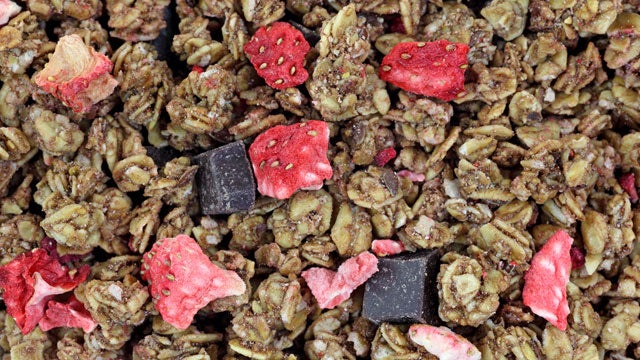Athleticism does you a lot of good, but it doesn’t make you immune to high cholesterol. Up to using either statins, drugs for blood pressure, or drugs for diabetes. Studies show they may have the wrong idea: Statins are known to impair training and cause muscle pain. Thankfully, there are dietary strategies for lowering cholesterol, blood pressure, and blood sugar that work just as well without the risk.
Here are some of the foods that studies have shown can help lower your cholesterol:
So, what would happen if you ate a “portfolio” of these foods instead of taking statins to lower your cholesterol? Scientists at the say you’ll experience much of the same effect:
We have and continue to carry out research on vegetable proteins and their potential health benefits eg. soy, gluten, and other cereal and vegan proteins. Most recently we have started to combine foods with cholesterol lowering actions (soy, viscous fibers, oats, barley, plant sterols and nuts—almonds) in a single diet to lower serum cholesterol. We have demonstrated that early statin-like effects can be achieved under highly controlled conditions. In the real world this dietary approach has a somewhat dampened level of efficacy, but remains a highly effective dietary approach to cholesterol reduction.
Further Toronto studies suggest this assessment may be a bit modest: In a of 46 middle-aged subjects with high cholesterol, the lipid-lowering effect of one month spent on the portfolio diet was comparable to one month of statin therapy:
The control, statin, and dietary portfolio groups had mean decreases in low-density lipoprotein cholesterol of 8.0%, 30.9%, and 28.6%, respectively…. The significant reductions in the statin and dietary portfolio groups were all significantly different from changes in the control group. There were no significant differences in efficacy between the statin and dietary portfolio treatments. CONCLUSION: In this study, diversifying cholesterol-lowering components in the same dietary portfolio increased the effectiveness of diet as a treatment of hypercholesterolemia.
More recently, studies on what adding can do for the portfolio diet have shown added benefits:
Strawberries also improved the palatability of the diet. We conclude that strawberry supplementation reduced oxidative damage to LDL while maintaining reductions in blood lipids and enhancing diet palatability. Added fruit may improve the overall utility of diets designed to lower coronary heart disease risk.
Implications for Athletes
Athletes with cholesterol issues who want to avoid might consider adopting the portfolio diet in place of statins. Statins are effective cholesterol-lowering drugs, yes—but muscle pain is a nasty and fairly common side effect.
Now, statins do reduce mortality in those who have or are at risk of having cardiovascular disease, and statins can be rightfully applied as “primary prevention” even to those with a , as these individuals display few significant side effects:
Reductions in all-cause mortality, major vascular events and revascularisations were found with no excess of adverse events among people without evidence of CVD treated with statins.
However, the studies that made these conclusions did not include a large number of highly active people or serious athletes. In studies of professional athletes with serious familial cholesterol problems, could tolerate statins without muscle pain, and some even showed an increase of short-term muscle damage following heavy exercise.
Statins can be terrific drugs, but we have a limited understanding of how they interact with exercise. To avoid complications, consider the portfolio diet your healthy alternative.
Making The Portfolio Work For You
Here are a few quick tips for incorporating elements of the portfolio into your diet:
- Try a morning post-workout smoothie with a handful of berries and nuts plus a couple of tablespoons of flaxseed or oat bran.
- Find the low-carb, soy- or whey-based protein bar that works for you in the case of a snack.
- Keep some almonds in your desk or backpack.
- In general, stock your house with portfolio foods. Your default choice will be the easiest, so make it healthy.
Michael J. Joyner, M.D., is a physiologist and anesthesiologist at the Mayo Clinic and a leading voice in the world of exercise physiology. Over the past 25-plus years, he’s published hundreds of studies, many of which have focused on how humans respond to exercise. Dr. Joyner also writes at . The views expressed in his posts are his own and do not reflect those of his employer.


